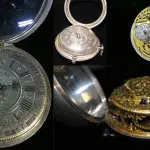
NATO sends ships and fighter jets to eastern Europe
BRUSSELS (AP) — NATO said Monday that it’s putting extra forces on standby and sending more ships and fighter jets to eastern Europe as Russia continues its troop build-up near Ukraine.
It said that it’s beefing up its “deterrence” presence in the Baltic Sea area. A number of members of the 30-country military organization have offered troops and equipment.
Denmark is sending a frigate to the Baltic Sea and deploying F-16 war planes to Lithuania. Spain is sending ships to join NATO’s standing maritime force and considering sending fighter jets to Bulgaria. France stands ready to send troops to Bulgaria, NATO said.
“NATO will continue to take all necessary measures to protect and defend all Allies, including by reinforcing the eastern part of the Alliance. We will always respond to any deterioration of our security environment, including through strengthening our collective defence,” NATO Secretary General Jens Stoltenberg said in a statement.


